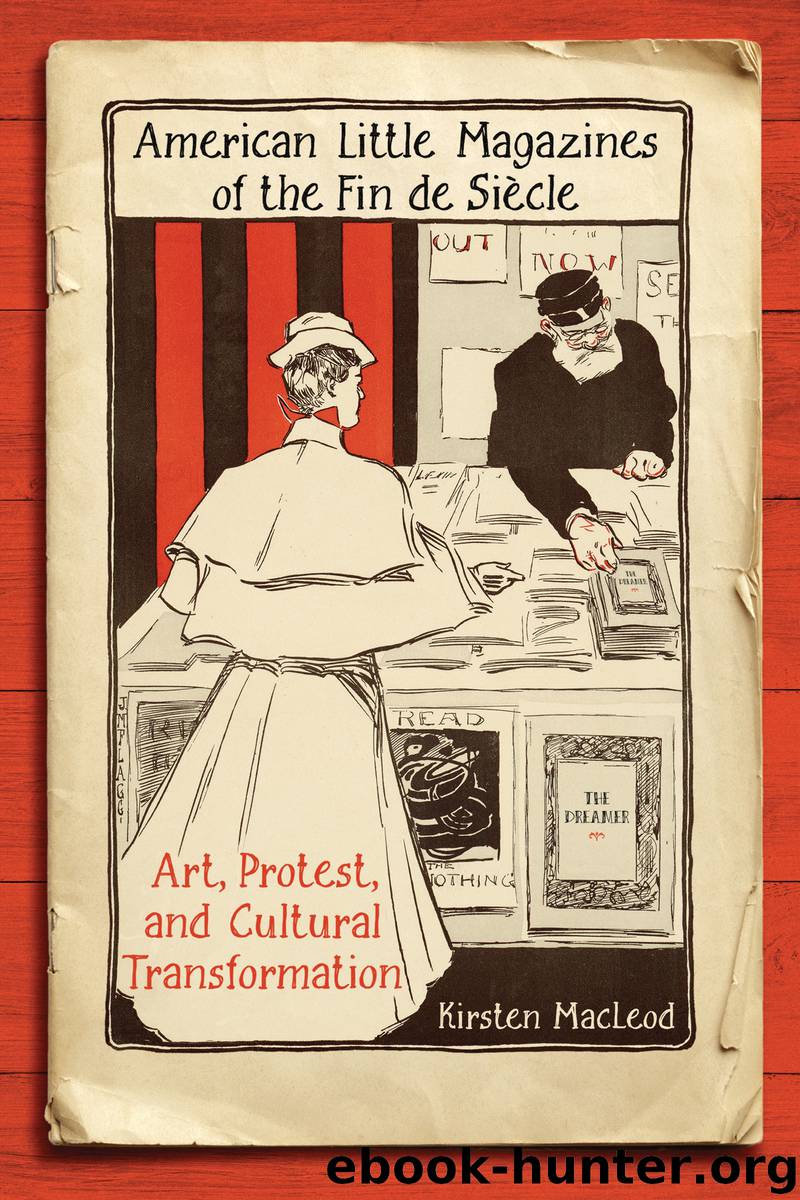American Little Magazines of the Fin De Siecle by MacLeod Kirsten;

Author:MacLeod, Kirsten;
Language: eng
Format: epub
Publisher: University of Toronto Press
At the same time, portraits of writers were a dominant feature of the magazine in this early period, and would remain so. These generally appeared in conjunction with an article on the writer. In early numbers, The Chap-Book even included photographic representations of authors, a practice increasingly popular in mainstream magazines where authors were treated as celebrities.2 Photographs, as Beegan argues, “played an important role” in the shift from a culture of character to a culture of personality, enabling “a direct connection between the reader and the subject of the photograph” (115, 117). In this respect, the halftone might have seemed well suited to magazines that privileged intimacy, personality, and subjectivity. Its association, however, with mass reproduction made it suspect, and little magazinists often frowned on photographic representation as inartistic, save for those who were seeking to promote photography as art, as Alfred Stieglitz would soon do in his little magazine, Camera Work. In this context, The Chap-Book’s early photographic representations of authors soon gave way to more artistic modes that accentuated the individuality and personality of their subjects in a different manner.
This transition is exemplified in the magazine’s treatment of Paul Verlaine. A July 1894 issue features a photographic representation of the poet that emphasizes his gravitas in the reverent and conventional style of the period (“Paul Verlaine”; see Figure 6.2). In March 1895, however, The Chap-Book features a more unconventional representation, one informed by French artistic avant-gardism and produced by Verlaine’s friend, F.-A. Cazals. Rather than providing a realistic image of the author’s face, Cazals’s “Portrait of P.V.” seeks to capture his essence in an image from behind, depicted in a hat and large coat, strolling cane in hand, looking every bit the vagabond poet (see Figure 6.3). The image challenges the reader’s cultural sophistication, as it provides only a cryptic identification in the caption. The reader must know that “P.V.” stands for Paul Verlaine and that Epigrammes is his book. At the same time, this image represents another instance of The Chap-Book’s use of art to promote books and a cosmopolitan bibliophilic culture – in this instance, a French limited edition book issued by a press associated with the avant-garde magazine La Plume.
Figure 6.2 Photograph of Paul Verlaine (1893), by Otto Wegener as reproduced in The Chap-Book, 1 July 1894. In possession of author.
Download
This site does not store any files on its server. We only index and link to content provided by other sites. Please contact the content providers to delete copyright contents if any and email us, we'll remove relevant links or contents immediately.
| Booksellers & Bookselling | General |
| History of Books |
4 3 2 1: A Novel by Paul Auster(11788)
The handmaid's tale by Margaret Atwood(7447)
Giovanni's Room by James Baldwin(6808)
Asking the Right Questions: A Guide to Critical Thinking by M. Neil Browne & Stuart M. Keeley(5355)
Big Magic: Creative Living Beyond Fear by Elizabeth Gilbert(5351)
Ego Is the Enemy by Ryan Holiday(4954)
On Writing A Memoir of the Craft by Stephen King(4661)
The Body: A Guide for Occupants by Bill Bryson(4580)
Ken Follett - World without end by Ken Follett(4441)
Bluets by Maggie Nelson(4259)
Adulting by Kelly Williams Brown(4231)
Eat That Frog! by Brian Tracy(4147)
Guilty Pleasures by Laurell K Hamilton(4116)
White Noise - A Novel by Don DeLillo(3828)
The Poetry of Pablo Neruda by Pablo Neruda(3813)
Fingerprints of the Gods by Graham Hancock(3731)
Alive: The Story of the Andes Survivors by Piers Paul Read(3728)
The Book of Joy by Dalai Lama(3694)
The Bookshop by Penelope Fitzgerald(3616)
